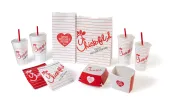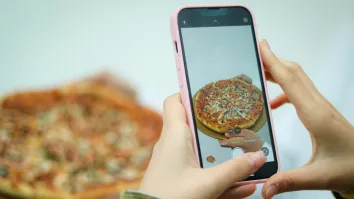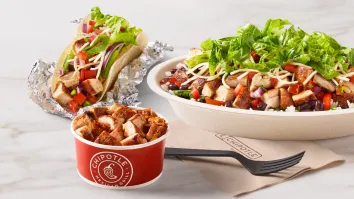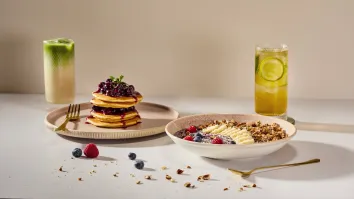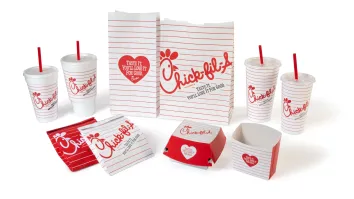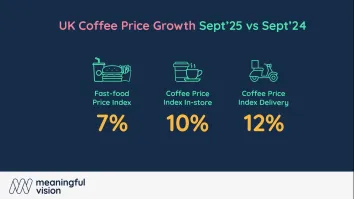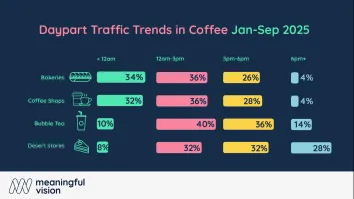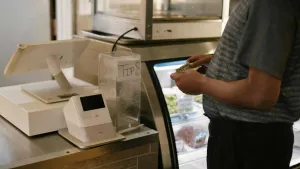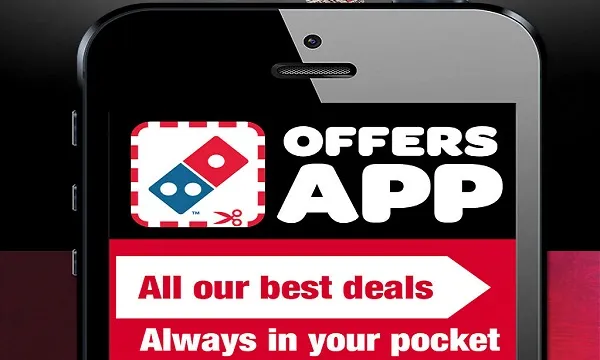
Find out the digital deal's role in improving customer experience
Combo items, special discounts, and the daily special – whether people dine out or stay in, a customer wanting a good deal has always been a sure thing.
Some QSRs have already recognised its value in digital ordering, quickly offering a deal even before you think of what to get.
Targeted offers
Check out the Domino’s Australia website, and you’ll see a pop-up window of their 3 Pizzas Daily Deal where the customer can choose between their Value Range and Traditional Pizzas. That’s besides the special offers that customers can receive from their local store – which also happens daily.
“Domino’s aims to consistently deliver high quality meals to our customers at affordable prices – and provides customers with easy access to great deals,” a Domino’s spokesperson said to QSR Media.
Claiming to be one of the first QSRs to implement a mobile app for orders, Domino’s has been synonymous with tech innovations in the past years. They recognize that combining it with targeted offers like the daily deal builds on their aim to make the customers’ ordering experience “as seamless and rewarding as possible.”
“Our Offers App and e-Club emails, allow customers to receive special offers for their local store, including limited time offers that include new and popular products. These, coupled with special offers on our website, social media and local direct, reach new and existing customers every day. Our offers, like our service, aim to provide the meals our customers love, at an affordable price, when and where they want it.”

Innovation as focus
Pizza Hut Australia, meanwhile, recently brought back its popular Footy Feed deal on their website and social media platforms. The deal allows customers to get two large pizzas plus a side of either a half-rack of pork ribs or ten pieces of buffalo wings. Initially introduced with a limited schedule last year, the football-inspired offer was brought back after getting good feedback from their customers.
“We’ve been thrilled to see that our Footy Feed has resonated so well with not only our loyal customer base but with newer generations of customers as well. It’s clear that our strategy to provide an affordable boxed deal, suiting a variety of group sizes has aligned so well with younger Footy fans,” Pizza Hut said in an email interview.
Currently with over 300 stores in Australia, Pizza Hut cite their affordable deals and staple heritage products that allows them to keep their customer base. Using digital strategies to reach new and old customers, they say it is “absolute truth” that people prefer an easy ordering experience.
“Technology innovation is a huge business focus for Pizza Hut. We’re always striving to provide customers with a streamlined online ordering experience to make it easier than ever to get the pizza they want. Our new website (launched in March) reflects this goal and we’ve received great feedback from customers around usability and reduced ordering times,” they said.
Their website, which quickly shows their special deals, aims to provide customers with an optimised online experience that is easily understood by users.
“We’ve designed it specifically for mobile and desktop to provide consistency for customers on all their devices. It’s been created from the ground up, taking inspiration from current market leaders in e-commerce, so customers should instantly be familiar with navigating the site – making it easy to order Pizza Hut when they want it.”
A rise in dealing
A market research firm identified two particular trends that supported digital ordering in Australia – the ‘homing’ trend and digitally-enabled convenience.
“With the homing trend, consumers are staying at home more, entertaining friends and family and have more entertainment options available to them from the comfort of their own homes. This in turn has influenced more digital ordering for those who don’t want to cook. People want more convenience in every aspect of their lives and foodservice is no different. With a few scrolls, taps and clicks, they have access to any cuisine type, delivered right to their door within the hour,” said Ciara Clancy, executive director, industry expert, Asia-Pacific (APAC) foodservice of The NPD Group.
Data from the firm also suggested that these ‘digital deals’ are working for food retailers. According to their latest research, 50% of all delivery occasions in Australia include some form of deal. Less than a third of non-delivery occasions, in contrast, include a deal.
“There has been a plethora of new entrants to the delivery market in the past 18 months and many of these are engaging in deals to drive awareness of their launch and trial their new delivery service. This in part has resulted in a much higher level of dealing activity than we see in the industry overall. That said there is also a demand or ‘pull through’ from consumers.” Clancy added.
Looking at the Big 4 countries in the APAC, The NPD Group’s report also said that 68% of consumers in the area say that their digitally ordered meal or snack was part of a deal – with millennials serving as core digital users.
“Millennials and families are the core consumers for delivery and it’s fair to say they are more price-conscious than other generations. Value for money is top of mind for both these groups when eating out. Given the level of dealing available through delivery, there is also a higher expectation to get a delivery deal than dining in the restaurant.”
But while there is a notable rise in dealing, Clancy surmises that the digital deal in itself is just one element of the customer experience for brands.
“The key question brands need to address is how [they are] adding value to the consumer experience, whether that is through a deal, on premise experience or product quality. Identifying and developing this, as a brand’s unique selling proposition, is critical to making that brand stand out and developing a sustainable customer base.”
‘Food deal only an incentive’
A customer retention specialist agrees with this assessment, explaining to QSR Media that the digital deal itself isn’t the “success factor” in improving customer experience.
“The food deal is only the incentive to order through digital methods. The integrated experience will determine whether it adds to or subtracts from customer retention,” said Christina Murrell, customer retention marketing strategist for Loyalty Tribe Marketing.
However, Murrell says that this doesn’t excuse retailers from utilising digital ordering methods. Citing a U.S.-based restaurant study, she explains that digital ordering is top priority for software changes this year.
“Consumer demand for digitally ordering food is not going away. It's no longer a “nice to have”, it's a requirement if food retailers wish to stay relevant with their customers.
Providing a digital ordering method is only one part of the overall customer experience. If you choose to offer digital ordering, it must be seamless & integrated,” she added. (Read: The rise of the customer experience king)
Murrell also observes that the more innovative retailers in this particular service have become “data smart” by ensuring that their ordering platforms are integrated with their central customer databases.
“Leading U.S. food retailers are using data mining & predictive methods to craft personalised & highly targeted campaigns to optimise revenue from existing customers. They not only avoid sales cannibalisation, but achieve customer retention as a by-product.”
Crafting a good deal that will incentivise customers also needs proper planning. For Murrell, food retailers might want to revisit their objectives: whether in getting more customers or in retaining them.
“For acquisition, the best cue is to analyse your product sales data. Look at what flavours & combinations work. Look at the food trends. Look at what is in the pantry. For retention, analyse your customer database. See who is buying what. For example, if you would like to launch a new flavour beer on tap, look at who is buying current beers & what food items they usually buy it with. Create a campaign targeting these people combining the new beer with a common food item. Get feedback & analyse the results before rolling out the acquisition campaign.”
Murrell also provides caution in quickly rolling out deals. She says that in order to find balance between giving a good digital deal and profiting from it, food retailers must ideally understand its average Acquisition Cost per customer.
“If you know this then you would know how much you can spend to acquire a new customer without jeopardising profit margins. Otherwise, it is based on how much margin you are comfortable to give away. But never spend over your average margin! The important thing is you must have clarity on your figures to assess whether you can afford giving anything away at all.”
Aside from deals, Murrell recommends strategies around automation & systemisation and the integration of customer data while exploring additional digital innovations such as interactive kiosks and table-side ordering devices.
“Everything is digital now a days! Digital means data. Have clarity on your data ecosystem & what needs to be set up as the data foundation,” she added.
(Offers App photo courtesy of Domino's; Footy Feed deal photo courtesy of Pizza Hut Australia)
